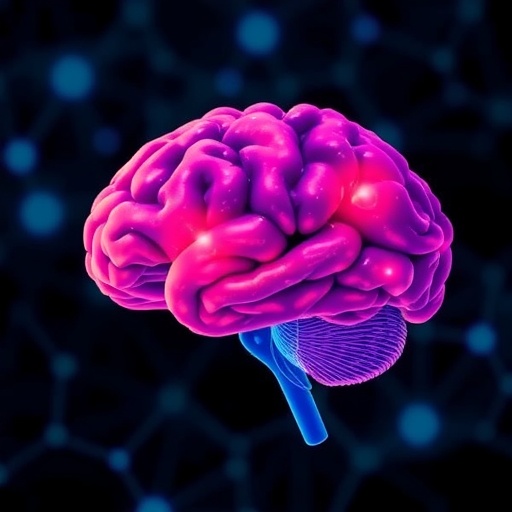In a groundbreaking study published in BMC Psychiatry, researchers have unveiled distinct age-related patterns in brain activity disruptions associated with first-episode major depressive disorder (MDD). This large-scale investigation, derived from the REST-meta-MDD project, employs advanced neuroimaging techniques to quantify regional homogeneity (ReHo), a crucial measure of localized neural synchronization that sheds light on the spontaneous brain activity alterations in depressive states.
Major depressive disorder is a complex mental health condition characterized by pervasive mood disturbances and cognitive deficits. ReHo, which evaluates the consistency of neural activity within adjacent brain regions, has emerged as a sensitive biomarker to probe the dysregulation inherent in MDD. Until now, the subtle interplay between age-related neural variations and depressive pathology remained elusive. This study pioneers the exploration of how ReHo differs across age groups in individuals experiencing their first episode of major depression.
The investigators stratified patients into three distinct age cohorts—young adults (16–24 years), middle-aged adults (25–39 years), and older adults within middle age (40–54 years)—to dissect the nuanced age-dependent modifications in neural coherence. The research leveraged one of the most extensive neuroimaging datasets available, enhancing statistical power and ensuring replicability of findings. This stratification revealed strikingly different topographies of ReHo alterations contingent on age, highlighting the dynamic nature of depression’s neural footprint.
In young patients, the study found pronounced decreases in ReHo within the right middle frontal gyrus, right superior parietal lobule, and left inferior temporal gyrus. These regions are integral to cognitive control, attentional processes, and emotion regulation. The impaired synchronization in these clusters suggests early disruptions in executive functioning networks and sensory integration processes, potentially underpinning the clinical symptomatology observed in adolescent and young adult depression.
For the adult subgroup, ReHo deficits manifested primarily in frontal regions, including the right superior frontal gyrus, left middle frontal gyrus, and right inferior frontal gyrus. This frontal lobe attenuation aligns with the established role of prefrontal cortical areas in mood regulation, decision-making, and higher-order cognitive functions typically compromised in depression. The lateralized pattern points to possible hemispheric distinctions in the pathophysiology of adult-onset major depressive disorder.
Middle-aged individuals exhibited a different constellation of ReHo abnormalities, with reductions localized to the right paracentral lobule, right inferior temporal gyrus, and left middle occipital gyrus. These cerebral zones are implicated in sensorimotor integration, visual processing, and memory. The involvement of such diverse regions may reflect the compound effects of aging and chronic stress-related neural remodeling characteristic of later-life depression.
Beyond discrete regional changes, the study identified a progressive age-related decline in ReHo in key cortical areas, specifically the left postcentral gyrus, left superior parietal lobule, and left superior temporal gyrus. These findings highlight a trajectory of diminishing local neural coherence that correlates with both chronological aging and depressive pathology. Such gradients of neural diminishing emphasize the importance of age as a modulatory factor in the neurobiological underpinnings of MDD.
A particularly noteworthy discovery was the significant disease effect observed in the right superior frontal gyrus across all age groups, reinforcing this region’s pivotal role in the neuropathology of depression. Moreover, the data revealed an interaction between age and disease status in the right superior occipital gyrus, suggesting that visual and associative processing hubs may be differentially affected depending on the age at depression onset.
To assess the translational applicability of their findings, the researchers conducted receiver operating characteristic (ROC) analyses to evaluate the diagnostic potential of age-specific ReHo patterns. The outcomes were promising, indicating strong discriminative power particularly within the adult and middle-aged populations. This approach underscores ReHo’s emerging utility as a biomarker for early diagnosis and personalized treatment stratification in MDD.
The implications of this research extend beyond diagnostics. By delineating the age-dependent neural signatures of depression, it fosters a more nuanced understanding of the disorder’s heterogeneity, potentially guiding the development of age-tailored therapeutic interventions. The clear differentiation of affected brain regions across lifespan stages advocates for precision medicine approaches that account for neurodevelopmental and neurodegenerative changes.
This study teams rigorous methodological design with cutting-edge neuroimaging, embodying a paradigm shift in psychiatric research towards integrating neurobiological metrics with clinical phenotyping. Its findings beckon further exploration into the causal mechanisms linking ReHo alterations to symptom dimensions and treatment outcomes, potentially bridging the gap between neuroscience and clinical psychiatry.
As mental health practitioners grapple with the societal burden of MDD, insights from this investigation offer hope for improving prognostic accuracy and therapeutic efficacy. Future research trajectories might explore longitudinal changes in ReHo post-treatment and examine how environmental and genetic moderators interface with these neural biomarkers.
In sum, the elucidation of age-specific ReHo changes in first-episode major depressive disorder charts a new frontier in understanding the brain’s dynamic response to depression. It establishes a compelling neurophysiological narrative that intersects developmental neurobiology and psychopathology, promising to reshape diagnostic frameworks and personalized care models in depression.
Subject of Research: Alterations in regional brain homogeneity (ReHo) related to age in first-episode major depressive disorder patients.
Article Title: Age-related regional homogeneity changes in first-episode major depressive disorder: a REST-meta-MDD project study
Article References:
Liu, Z., Wu, H., Xu, Y. et al. Age-related regional homogeneity changes in first-episode major depressive disorder: a REST-meta-MDD project study. BMC Psychiatry 25, 1049 (2025). https://doi.org/10.1186/s12888-025-07406-x
Image Credits: AI Generated
DOI: 03 November 2025
Keywords: Major depressive disorder, regional homogeneity, ReHo, neuroimaging, age-related brain changes, first-episode depression, neural synchronization, REST-meta-MDD, biomarkers, diagnostic imaging




